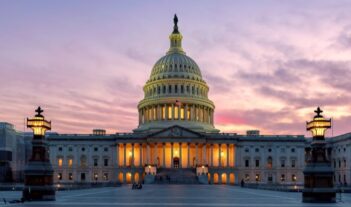
Periodic reviews of regulations can promote learning and improve policy.
As regulators consider new rules and potential revisions to past rules, they should learn from experience, both to improve regulation and to enhance the accuracy of policy analyses.
Retrospective review is one tool for such learning. But despite longstanding calls for retrospective review of regulations—that is, for their evaluation after being in force—the results of such reviews have been episodic and limited.
One potential way to make retrospective review more consistent and systematic, and to cultivate more iterative updating through continuous performance evaluation, may be to make these reviews periodic. Rather than a single look-back retrospective review, a process of periodic review would involve repeated evaluations on a scheduled frequency, such as every five or ten years.
The Administrative Conference of the United States (ACUS) has recommended such periodic review since at least 1995. In addition, some executive orders and statutes even call on agencies to undertake periodic reviews. But there has been little study of how often periodic review is employed, how well it performs, and whether it should be undertaken more widely.
In a recent report on Periodic Review of Agency Regulation for ACUS, we investigated which executive orders and statutes call for periodic reviews; how agencies undertake periodic reviews; and their incentives, barriers, and facilitators. We sought to inform best practices for agencies to employ periodic reviews to improve regulation and regulatory impact analysis.
We assembled a database of periodic review efforts across U.S. federal agencies and used that database to select a representative sample for more detailed study. For each review in our sample, we collected documentary evidence, and we conducted interviews of knowledgeable staff at several agencies, including the U.S. Environmental Protection Agency (EPA), the U.S. Department of Agriculture (USDA), the U.S. Department of Transportation (DOT), the Occupational Safety and Health Administration (OSHA), and the Office of Information and Regulatory Affairs (OIRA).
We found at least 20 statutes calling for reviews to be conducted “every X years,” such as every four, five, eight, or ten years, and an additional 20 or more statutes calling for reviews to be conducted “periodically” or “from time to time.” These 40 or more statutes include the Clean Air Act, the Endangered Species Act, the law on National Dietary Guidelines, and the Telecommunications Act of 1996. In addition, several executive orders have called on agencies to “periodically review” their existing regulations, including executive order 12044 (1978), executive order 12866 (1993), and executive order 13563 (2011). And some agencies have adopted policies to guide their own rulemaking, with periodic review processes required in some cases.
Our preliminary findings suggest that although periodic reviews are widely required, they are inconsistently implemented. Some of this inconsistency may stem from ambiguity in the requirements. Some may reflect lack of agency staffing or expertise, and the opportunity costs of periodic review, as agencies face resource constraints and obligations to do other activities or inhibitions to critique their own past work. Agencies may also be persuaded to delay periodic reviews out of concern for possible costs of policy instability to affected parties.
Our interviews suggested that agencies are more likely to conduct periodic reviews when specifically required by statute, when the time interval is clear (“every X years”) rather than ambiguous (“periodically”), and when the agency adapts the periodic review process to cultivate a culture of ongoing evaluation and updating.
EPA’s five-year reviews of the National Ambient Air Quality Standards (NAAQS) and the USDA’s and U.S. Department of Health and Human Services’ reviews of the Dietary Guidelines for Americans were among the periodic review programs that have been integrated most successfully into agency culture and process. Notably, the periodic reviews of both of these programs benefit from expert advisory committees.
The net benefits of periodic reviews are likely to be greater when the evidentiary basis for the regulation is evolving rapidly—such as with changing science, technology, or social conditions. The benefits are likely to be smaller, however, where the opportunity costs of repeated reviews—to the agency and to society—are high. The usefulness of periodic reviews is improved when the reviews are shared widely across government and with the public.
The optimal frequency of periodic review remains an understudied variable. Where the frequency of periodic review is set by law at “every X years,” these required periods typically lack stated reasons or explanations for why this time period was chosen over alternative time periods. Congress should assess these timelines when it sets periodic time intervals. The U.S. Office of Management and Budget (OMB) and agencies should assess the optimal frequency of periodic reviews when they have the discretion to set their own time intervals or schedules, and develop recommendations for executive orders, statutes, and agency policies to optimize these frequencies.
A new executive order that updates and expands on section five of executive order 12,866, or a new version of OMB Circular A-4, could go beyond calls for reviews to be conducted “periodically” or “from time to time.” Instead, they could identify normative criteria for OMB and agencies to use to select specific time periods in each policy area.
In principle, the optimal frequency for reviews should vary in direct proportion to the expected rate of change and the associated gains from learning about policy performance and about impact assessment methods. The optimal frequency should vary in inverse proportion to the expected opportunity costs of repeated reviews—including to the agency and to society. These considerations are likely to vary by issue area, so that the optimal frequency of periodic reviews may also vary.
Our report helped inform ACUS’s adoption of Recommendation 2021-2 (published in the Federal Register on July 8, 2021). It should be noted that neither ACUS Recommendation 2021-2 nor our report argue that periodic review is warranted in all cases. We expressly recognize that periodic review may pose costs, both to the agency and to society. And we also recognize that periodic review will be more valuable—and its optimal time interval will be shorter—when the gains from learning are higher because the relevant circumstances are changing quickly from the conditions and knowledge that prevailed at the time of the initial impact assessment and issuance of the rule.
Moreover, the report emphasizes that the agencies that have made periodic reviews work best have developed data sources and staffing models that enable ongoing monitoring, learning, and updating as a continuous process—rather than a last-minute dash to produce a report by the due date.
For these reasons, we recommend that periodic review be invoked and applied selectively, in situations where its net benefits will be greatest and where practical organizational approaches will make periodic review a help, not a hindrance, to the process of agency policy-making.
One of the newest statutes discussed in our report, the Foundations for Evidence-Based Policymaking Act of 2018 offers the potential, if well implemented, for periodic evaluations and “learning agendas” across many agencies of the government. The latest guidance issued by OMB in June 2021 on implementing this Act “reaffirms and expands on previous OMB guidance on Learning Agendas and Annual Evaluation Plans” issued in 2019 and 2020, and it urges agencies to recognize that “success requires that agencies develop processes and practices that establish habitual and routine reliance on evidence across agency functions and demand new or better evidence when it is needed.”
Our report on periodic review, along with the associated ACUS Recommendation 2021-2, could help inform the design of agency learning agendas and evaluation plans. Ideally, periodic reviews will become part of an ongoing process of learning and adaptive regulation at regulatory agencies.
The authors thank Molly Bruce, JD/MEM ’21, Duke University for research assistance; key staff at several federal agencies for their interviews; numerous colleagues and ACUS staff for contributing helpful suggestions to improve the report; and ACUS committee chair Aaron Nielson and ACUS staff including Todd Rubin, Leigh Anne Schriever, Gavin Young, research director Reeve Bull, and chair Matt Wiener, for inviting and guiding the preparation of this report.
This essay is part of a four-part series on the Administrative Conference of the United States, entitled Improving Participation, Impact, and Fairness in the Administrative State.





